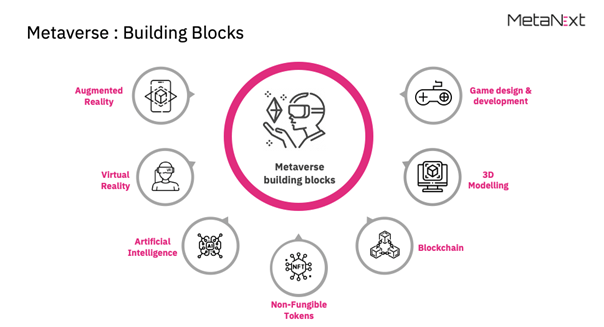
Digital Transformation 2.0
The digital transformation 1.0 wave has largely landed. Those business that have yet to digitize their operations are kicking their legs in the air and taking their last breath by now. What happens after digital transformation? Say hello to DX2.0.
The day when digital transformation began
Okay, maybe not a specific day. It’s hard to drag out a specific year, let alone day, when the rampage of digital transformation began to reap its whirlwind on the global economy. It’s been more of a gradual thing, an ever-accelerating tsunami that began at some point in the 1990’s.
Back in 1997, when Bill Gates began writing his business book Business @ The Speed of Thought, he started this 450 page colossal tome to the wonders of enterprise software with a singular prediction—‘Business is going to change more in the next ten years than it has in the last fifty.’ That, we could all probably argue, was a pretty safe bet. He also suggested that the digital age will fundamentally alter business. When he said that, I’m not sure many of us could fathom what that new type of business would look like.
We know now.
Digital transformation means more than an online business with offline back-office processing
What often gets overlooked, or intentionally misunderstood about the subject of digital transformation, is that it was never about automating processes and creating an online business. That was always possible in the 1990’s with known technology. No—what digital transformation 1.0 was about focused more on doing better things, not doing things better: It was about harnessing digital era technologies—like big data, blockchain, IoT sensor networks, geo-tagging, artificial intelligence, 3D printing, virtual reality and cloud computing—to re-think business models and serve up new customer value in new ways.
Unfortunately, as so often happens, digital transformation (being so loosely defined) has been interpreted by many to mean the transition of processes from paper-based and driven by people to something that’s online driven by computers.
Has digital transformation 1.0 happened, then? Is it over?
Yes. We’ve seen many great examples of DX1.0. For example, practically every utilities company is using smart meters to count energy usage and to remotely manage the health of their assets. Plenty of companies are using artificial intelligence instead of humans to make critical decisions every day. We have seen ticket offices become a thing of the past, and we’ve also seen driverless trains, cars and vans start to make their appearance. No argument then, it might not be fully over, but DX1.0 has become everyday news.
So, if the DX1.0 wave has crashed against the shoreline and is now receding, where does the world of business go from here? The answer is digital transformation 2.0, or in layman’s terms, our societies’ journey into the metaverse.
DX 2.0 = Metaverse 1.0
Digital transformation 2.0 is all about what happens when the real-world of commerce steps into the virtual metaverse world, having seen it as something tangible, marketable—transformative.
On the 28th October 2021 , Mark Zuckerberg took Facebook into the metaverse by rebranding his group business as Meta. When he did, he said, “The metaverse is the next frontier in connecting people, just like social networking was when we got started’’ and that, “Over time, I hope we are seen as a metaverse company, and I want to anchor our work and our identity on what we’re building towards.” Anyone not interested in the metaverse, suddenly got a wake-up call to take it more seriously.
The metaverse in 2022. I’m reminded of the year before cloud computing really took hold. People were trying to get their respective heads around what cloud computing was, and the platform constructs—like SaaS, PaaS, SaaS, etc.—that were found within it. Having the general idea, many of us in the tech industry were hovering around water coolers discussing what we could do with it, and what the impacts would be.
It feels like that now with the metaverse. Analysts are busy placing bets on just how big and influential the metaverse will be in just a couple of years… $300 billion, $600 billion, $700 billion…???
According to PMI research, the metaverse market is estimated to reach US$ 947.118 billion by 2030 with a CAGR of 38.8% during the forecast period—but there are a succession of alternative reports, each offering a different number. The truth is, nobody knows the precise figure but, whichever you choose to believe, the fact of the matter is that the metaverse market opportunity is unfathomably large.
But let’s take a step back and start at the top for those not heavily invested, as of yet, into the metaverse.
Back to basics
The metaverse is a broad brush term to describe digital environments where humans can interact in a virtual 3D landscape. Coding teams are busy creating new digital worlds (let alone places), where you can wander meadows, buy products, interact with other humans (in the form of avatars), and live a very different kind of life, unfettered by human issues like getting hungry, running to the toilet, dealing with gravity…breathing.
It began as experiments into the world of gaming. To begin with, it was very ‘toy.’ Not anymore. The quality of VR headsets and of 3D visualization technology means that it’s suddenly become very real—and very useful.
The building blocks
There are a number of building block technologies and platforms that are making the metaverse happen. These include:
Augmented reality—a technology that superimposes a computer-generated image on a user’s view of the real world, thus providing a composite view.
Virtual Reality—the computer-generated simulation of a three-dimensional image or environment that can be interacted with in a seemingly real or physical way.
Artificial Intelligence—intelligence demonstrated by machines, as opposed to the natural intelligence displayed by animals including humans.
Non-Fungible Tokens—essentially a digital token that allows its buyer to say they own the original copy of a digital file.
Blockchain—a system in which a record of transactions are maintained across several computers linked in a peer-to-peer network.
3D Modelling— the process of developing a mathematical coordinate-based representation of any surface of an object
Game Design and Development—the art of applying design and aesthetics to create a game for entertainment or for educational, exercise, or experimental purposes.

Experimenting with Digital Transformation 2.0
And, where have we got to with DX 2.0? At the moment, the entire industry is experimenting with ideas and sponsoring co-creation workshops to identify ways to turn early innovation into cash. While many of the use cases are becoming clearer, there remain big questions to answer about which tech platforms are going to end up being the metaverse equivalent of Android for mobile phones, and to what extent vendors will be able to ‘go it alone’ when the whole premise of the metaverse is a collegiate space that everyone shares.
That said, whatever the future holds for digital transformation 2.0, we can be sure that the companies that join in early and are prepared to ask new questions of technology will be among the big corporations of the future
